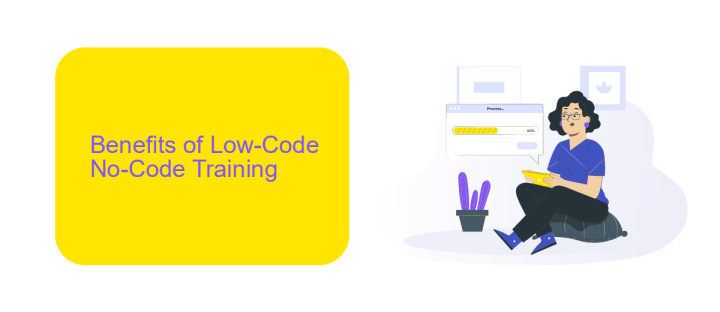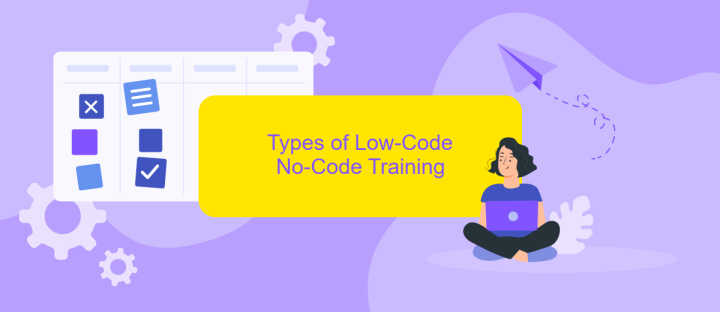Low-Code No-Code Training
In today's fast-paced digital landscape, the demand for rapid, efficient software development has never been greater. Low-code and no-code platforms are revolutionizing the way businesses approach application creation, enabling even non-technical users to build robust solutions. This article explores the importance of low-code/no-code training, highlighting how it empowers organizations to innovate faster and more cost-effectively.
Introduction to Low-Code No-Code Training
Low-Code No-Code Training offers a transformative approach to application development, enabling individuals with minimal coding experience to create functional software. This training is essential for businesses seeking to accelerate their digital transformation and reduce dependency on traditional development teams.
- Empowers non-developers to build applications
- Speeds up the development process
- Reduces costs associated with hiring specialized developers
- Facilitates quick prototyping and iteration
One of the key components of Low-Code No-Code Training is learning to integrate various services seamlessly. Tools like ApiX-Drive simplify this process by providing a platform for automating and connecting different applications without requiring extensive coding knowledge. With the right training, individuals can leverage these tools to create efficient workflows and enhance productivity.
Benefits of Low-Code No-Code Training

Low-Code No-Code (LCNC) training empowers individuals with minimal coding experience to develop applications and automate workflows efficiently. This democratization of technology enables organizations to leverage the creativity and problem-solving skills of a broader range of employees, leading to increased productivity and innovation. By reducing the dependency on IT departments, LCNC platforms help in faster project turnaround times and cost savings, making them an invaluable asset in today's fast-paced business environment.
Moreover, LCNC training facilitates seamless integration with various third-party services and APIs, streamlining business processes. For instance, ApiX-Drive allows users to effortlessly connect different applications and automate data transfers without writing a single line of code. This capability not only enhances operational efficiency but also ensures that businesses can adapt quickly to changing market demands. Overall, LCNC training equips teams with the tools they need to innovate and stay competitive, fostering a culture of continuous improvement and agility.
Types of Low-Code No-Code Training

Low-code and no-code training programs are designed to equip individuals with the skills needed to create applications with minimal or no coding experience. These training programs vary based on the level of complexity and the specific needs of the learners.
- Basic Training: This type of training introduces participants to the fundamental concepts of low-code and no-code platforms. It covers basic application development, user interface design, and simple workflow automation.
- Advanced Training: Aimed at those with some experience, advanced training delves deeper into complex functionalities, including data integration, API management, and advanced user interface customization.
- Integration Training: Focused on teaching how to integrate various services and applications, this training often includes the use of tools like ApiX-Drive, which simplifies the process of connecting different software systems without extensive coding.
These types of training cater to different skill levels and objectives, ensuring that both beginners and experienced developers can benefit. By leveraging platforms and tools such as ApiX-Drive, learners can efficiently manage integrations and enhance their applications' capabilities.
How to Choose the Right Low-Code No-Code Training

Choosing the right Low-Code No-Code training is crucial for maximizing the benefits of these platforms. Start by identifying your specific needs and goals. Are you looking to build simple applications or complex workflows? Understanding your objectives will help narrow down the training options.
Next, consider the learning format that suits you best. Some people prefer self-paced online courses, while others benefit from live workshops or one-on-one coaching. Evaluate the curriculum to ensure it covers essential topics like user interface design, workflow automation, and data integration.
- Assess the trainer's expertise and experience.
- Look for hands-on projects and real-world examples.
- Check for community support and additional resources.
- Ensure the training includes guidance on integrating with third-party services like ApiX-Drive.
Finally, read reviews and testimonials from past participants to gauge the effectiveness of the training program. A well-rounded training course will not only teach you the basics but also prepare you for advanced challenges, ensuring you get the most out of your Low-Code No-Code platform.
- Automate the work of an online store or landing
- Empower through integration
- Don't spend money on programmers and integrators
- Save time by automating routine tasks
Best Practices for Low-Code No-Code Training
To ensure effective Low-Code No-Code training, it's essential to start with a clear understanding of the platform's capabilities and limitations. Begin by providing a comprehensive overview of the tools and features available, ensuring that trainees are familiar with the interface and basic functionalities. Interactive tutorials and hands-on exercises can greatly enhance the learning experience, allowing users to apply theoretical knowledge in practical scenarios. Additionally, fostering a supportive learning environment where trainees can ask questions and share insights will encourage collaboration and deeper understanding.
Another best practice is to integrate real-world applications into the training program. Demonstrate how Low-Code No-Code platforms can be used to solve actual business problems, which will help trainees see the value and potential impact of these tools. For instance, using a service like ApiX-Drive can simplify the process of setting up integrations, making it easier for users to connect various applications and automate workflows. Providing examples of successful integrations and offering step-by-step guidance can empower trainees to leverage these capabilities effectively in their own projects.
FAQ
What is Low-Code No-Code development?
Who can benefit from Low-Code No-Code platforms?
How does Low-Code No-Code development impact the speed of application delivery?
What types of applications can be built using Low-Code No-Code platforms?
How can I integrate my Low-Code No-Code applications with other services?
Do you want to achieve your goals in business, career and life faster and better? Do it with ApiX-Drive – a tool that will remove a significant part of the routine from workflows and free up additional time to achieve your goals. Test the capabilities of Apix-Drive for free – see for yourself the effectiveness of the tool.


